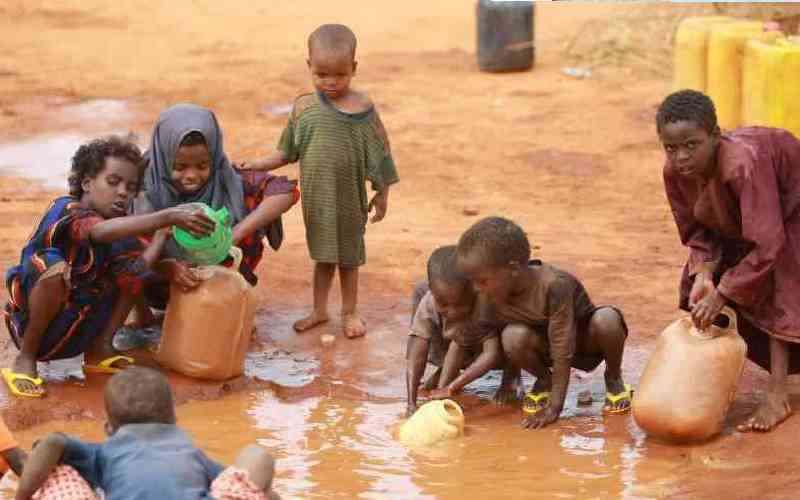Why number of displaced children shot up seven times
National
By
Mercy Kahenda
| Sep 08, 2023

The number of children displaced in Kenya by climate-induced disasters increased sevenfold last year, even as leaders and policymakers sought solutions at the Africa Climate Summit.
Data by the Internal Displacement Monitoring Center, conducted by Save the Children, reveals that at least 187,000 children in Kenya were displaced climate shocks at the end of 2022, against 27,000 children in 2021.
According to the report, some children were displaced multiple times, while others only once, but all remained displaced from home at the end of the year, living in camps, with extended family, or other temporary arrangements.
READ MORE
Gladys Shollei: Why is Kenya approving pesticides banned in Europe and the US?
Tourism industry raises concerns over ETA system delays
Kenya engages US to safeguard exports amid Trump's tariff war
Microsoft turns 50 in the age of AI
Sustainability core to future of Africa insurance industry
COMESA unveils plan to transform Africa's leather industry
How Nairobi-Addis deal is fuelling surge in Kenya's electricity imports
Family Bank profit jumps 38pc to Sh3.4b on higher interest income
Industry leaders, managers urged to support employees' ambitions
The report indicates the number could be higher, as these figures are only from four counties namely Garissa, Isiolo, Marsabit and Turkana.
"The impact of climate shocks on children is worrying. When children lose their homes they lose almost everything: access to healthcare, education, food and safety. They also lose the building blocks for mental and emotional stability and well-being, like a sense of routine, their friends, and the right to play," said Yvonne Arunga, Save the Children's Country Director for Kenya and Madagascar.
Regionally, the number of new internal displacements throughout the year across sub-Saharan Africa in 2022 due to such disasters was three times higher than the previous year, with 7.4 million new displacements in 2022, compared to 2.6 million in 2021.
The report notes displacement is the highest annual number of new displacements from climate disasters ever reported for the region, as the impacts of consecutive climate shocks have begun to sink in and both resilience of land and coping mechanisms of communities become exhausted.
"These figures lay bare the stark reality rights of children in Kenya and across the region are being eroded at an alarming rate by impacts of the climate crisis," said The Save Children in a statement.
Meanwhile, countries on the continent have contributed the least to the crisis, with a small share of global greenhouse gas emissions of all the world's regions.
"We are hoping that figures of displacement will spur leaders at the Africa Climate Week to wake up to the experiences of children across the region, acknowledge that the climate crisis is having a disastrous impact on their lives, and act urgently to factor in children's needs and rights into the much-needed response," added Arunga.
Further, With the El Nino weather pattern taking hold, causing even more extreme weather events and pushing up global temperatures further, it is likely that this figure will increase this year, said the child rights agency.
In the Horn of Africa, El Nino is historically associated with above-average rain during the October to December rainy season. As has been evidenced by rains in recent months, rains on the parched ground following almost three years of drought bring further risks of flooding, displacement, food shortages and disease.

